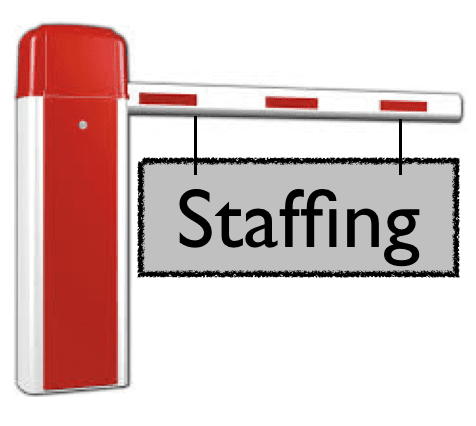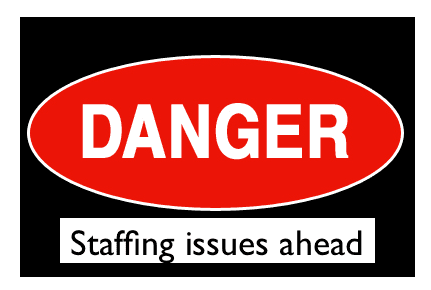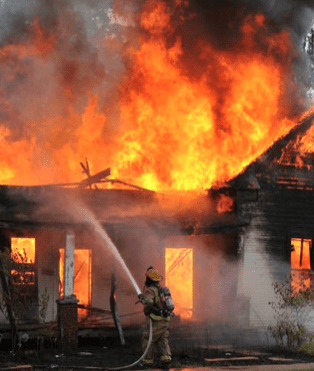 Research has demonstrated that, without question, stress can have significant impacts on situational awareness (SA). Stress can narrow your attention, cause task fixation, contribute to heightened awareness of non-critical information (at the detriment of more critical information) and so much more. As stress erodes situational awareness, it can also impact decision making. The research I have conducted on first responder situational awareness focuses on the barriers that impact SA. I have identified more than 100 barriers, many of them are discussed extensively in my books, videos, live programs and right here on the Situational Awareness Matters website.
Research has demonstrated that, without question, stress can have significant impacts on situational awareness (SA). Stress can narrow your attention, cause task fixation, contribute to heightened awareness of non-critical information (at the detriment of more critical information) and so much more. As stress erodes situational awareness, it can also impact decision making. The research I have conducted on first responder situational awareness focuses on the barriers that impact SA. I have identified more than 100 barriers, many of them are discussed extensively in my books, videos, live programs and right here on the Situational Awareness Matters website.
One category of barriers I identified are those relating to staffing issues. And the most pervasive of all the staffing barriers is under staffing. [tweet this]
Staffing barriers
 Before I get too far into the issue of under staffing, I want to share with you the list of staffing-related barriers that were uncovered during my research. Each of these barriers were implicated by the expert-level commanders I interviewed as a factor causing them to, at one time or another, lose their situational awareness during an emergency incident:
Before I get too far into the issue of under staffing, I want to share with you the list of staffing-related barriers that were uncovered during my research. Each of these barriers were implicated by the expert-level commanders I interviewed as a factor causing them to, at one time or another, lose their situational awareness during an emergency incident:
- Understaffing
- Overstaffing
- Unpredictable levels of staffing
- Quality of staffing
- Response time delays
- Lack of experienced staffing
- Inadequate training level of staffing
Under staffing as a situational awareness barrier
 When companies and commanders arrive at the scene of an incident where the workload demand is high (much needs to be done) and the staffing is limited, stress will go up. This can have several effects on the situational awareness of the commander, company officers and line personnel. For the commander, attention can narrow down to the high-risk activities being performed by the under-staffed crews. When companies engage in high-risk, high consequence activities without the proper staffing to do so, everyone knows they are rolling the dice. The commander knows it. The company officers know it. The line personnel know it.
When companies and commanders arrive at the scene of an incident where the workload demand is high (much needs to be done) and the staffing is limited, stress will go up. This can have several effects on the situational awareness of the commander, company officers and line personnel. For the commander, attention can narrow down to the high-risk activities being performed by the under-staffed crews. When companies engage in high-risk, high consequence activities without the proper staffing to do so, everyone knows they are rolling the dice. The commander knows it. The company officers know it. The line personnel know it.
Add to the stress the potential that if something goes wrong while the crews are operating inside the high-risk environment there may not be adequate back up resources available to perform a rescue. Sure, the personnel may be operating within guidelines of the O.S.H.A. Two-in, Two-Out requirement but most responders who have studied first responder casualty reports know two personnel serving as a rescue team (sometimes mislabeled as a RAPID intervention team) are grossly inadequate to perform a rescue.
Further, if the commander is grounded in reality, he or she will have to harbor doubts in the back of their mind about how well a RIT will perform their duties under stress and the extremely hazardous conditions that have trapped their comrades in the first place. Unless the mayday is called early and is called only for a minor issue, the odds of performing a successful rescue are stacked against the responders. This adds stress to the commander, to the companies operating short staffed and to the crew serving as the RIT.
As the commander, company officer and crew stress rises, attention can narrow. [tweet this] When this happens, personnel can begin to miss seeing and hearing some very important clues and cues. The incident scene can deteriorate seemingly right before their very eyes and they may appear to be blind and/or deaf to what is happening. The stress from understaffing can also trigger other situational awareness barriers and when multiple situational awareness barriers start to accumulate, the issues compound and the incident starts on the fast-track toward disaster.
It’s like the boat on the ocean that runs aground. The damaged boat starts to take on water. The water shorts out the electrical system. The electrical short causes the boat to catch on fire. The occupants abandon ship on a life raft. The raft has a pin hole in it and is slowly losing air. And sharks are starting to assemble for their evening feast.
Like the calamity of the sinking boat, multiple situational awareness barriers compound on each other.
Chief Gasaway’s Advice
 As with so many matters that relate to improving situational awareness, one of the first things is to be alert to the potential for narrowing attention as stress goes up. A commander can have a checklist available that provides reminders of the most important information that needs to be captured and processed.
As with so many matters that relate to improving situational awareness, one of the first things is to be alert to the potential for narrowing attention as stress goes up. A commander can have a checklist available that provides reminders of the most important information that needs to be captured and processed.
The commander could consider alternate tactics until enough help arrives to safely get the job done. Given the Type-A, aggressive, competitive nature of first responders, this can be a challenging task for decision makers. Nonetheless, sometimes it is the most important decision an officer can make – the decision to be defensive when appropriate.
When the decision is made to hold personnel outside the IDLH environment, the stress related to placing responders in a high-risk, high consequence environment reduces. However, the stress of giving the appearance of “doing nothing” to put the fire out can quickly increase stress. In fact, there is a stress trade off. The stress of engaging without proper staffing versus the stress of not engaging and the ridicule that may result.
I can’t say I was always good at managing this decision process and more times than not earlier in my career I selected the all-out aggressive attack on the fire without a lot of regard for the quality or quantity of my crew. Looking back, I was lucky. And that luck, repeatedly lucky! And of course, I fell victim to mistaking luck for skill (because I wasn’t experiencing bad outcomes). This gave me the confidence to be aggressive on every fire. I am fortunate to be here today to say what a fool I was. I simply didn’t know any better. And I sure didn’t know about situational awareness!
Action Items
- Discuss how staffing issues have impacted your stress and how it may have narrowed your attention.
- Discuss incidents where your department may have engaged in aggressive high-risk, high-consequence operations without adequate staffing and what impact it had.
- Discuss ways to maintain a big picture view of the incident when impacted from understaffing.
Share your thoughts and ideas in the “Leave a Reply” box below.
___________________________________________________________
The mission of Situational Awareness Matters is simple: Help first responders see the bad things coming… in time to change the outcome.
Safety begins with SA!
___________________________________________________________
Share your comments on this article in the “Leave a Reply” box below. If you want to send me incident pictures, videos or have an idea you’d like me to research and write about, contact me. I really enjoy getting feedback and supportive messages from fellow first responders. It gives me the energy to work harder for you.
Thanks,
Email: Support@RichGasaway.com
Phone: 612-548-4424
Facebook Fan Page: www.facebook.com/SAMatters
Twitter: @SAMatters
LinkedIn: Rich Gasaway
YouTube: SAMattersTV
iTunes: SAMatters Radio


Hi Rich,
marvelous explanation, and much need info you have shared,wish you all the best